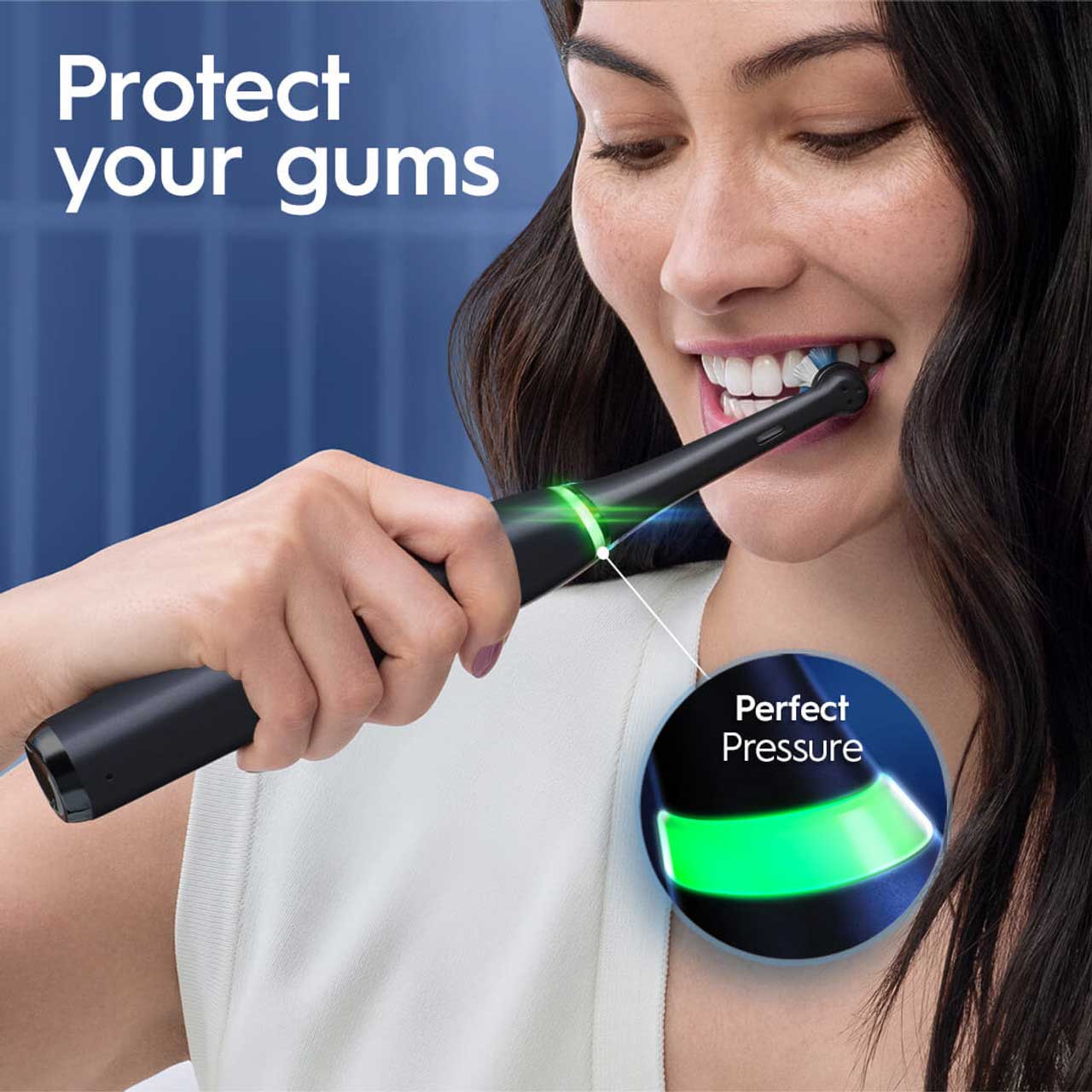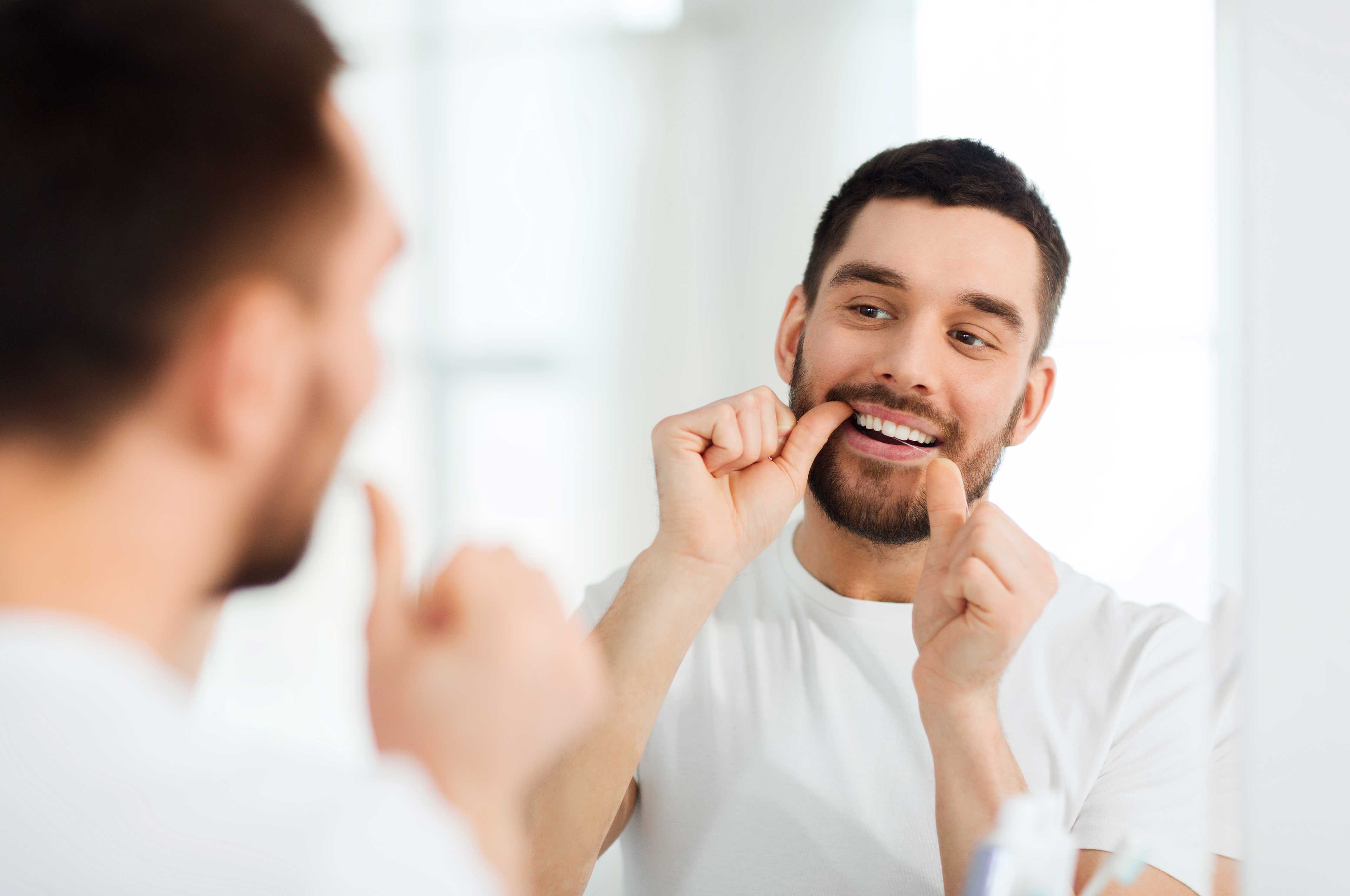How to Brush Your Teeth Properly: A Step-by-Step Guide

Summary
In this article, we’ll share a step-by-step guide on how to brush your teeth the right way and give you some additional tips for improving your oral health. Now that’s something to smile about!
Key Takeaways
- Takeaway #1: When brushing your teeth, start with a soft-bristled brush and a dentist-approved stannous fluoride toothpaste. Angle your toothbrush at 45 degrees to your gum line, and brush all sides of your teeth with gentle, back-and-forth strokes.
- Takeaway #2: If the bristles of your manual toothbrush or the refill of power brush looks worn, be sure to replace it right away. A worn toothbrush loses effectiveness. Expect to replace your toothbrush or the power brush refill about every three months.
- Takeaway #3: Brushing your teeth is a crucial part of your oral health routine. It removes plaque from your teeth and helps in management of tooth decay, bad breath, and gum disease in order to avoid worsening of other systemic issues.
Table of Contents

This blog has been reviewed and approved by Dr Robert Lee, a dental professional of 35 years
LEARN MORE >Key Takeaways
The Importance of Brushing Your Teeth
Brushing your teeth twice a day is the most important thing you can do for your oral health. When plaque builds up on your teeth, the bacteria of the mouth digest sugars from food to produce acids that cause cavities.
Brushing removes that plaque from your teeth, which lessens the risk of tooth decay, bad breath, and gum disease and helps remove stains.
Plaque can also cause inflammation, leading to gum disease. Effective plaque removal is essential not just for a healthy mouth but also for your overall health, as poor oral hygiene can be linked to other health issues like heart disease and diabetes.
How to Brush Your Teeth: Step by Step

Since it’s recommended to brush your teeth at least twice a day every day, you’ll want to do it right. Here’s a step-by-step guide for how to brush your teeth.
Step 1: Choose the Right Toothbrush and Toothpaste
Good brushing starts with the right toothbrush and toothpaste. Choose a soft-bristled manual toothbrush or, better yet, an electric toothbrush.
For toothpaste, choose an option with stannous fluoride to help reduce plaque accumulation and cavities.
Step 2: Angle Your Toothbrush 45 Degrees to the Gum Line
After placing a pea-sized amount of toothpaste on your toothbrush, position your toothbrush at your gum line, angled at 45 degrees.
Step 3: Brush the Outer, Inner, and Chewing Surfaces of Your Teeth
Gently move the brush back and forth in short strokes across all sides of your teeth — outer, inner, and chewing surfaces.
To clean the inside surface of your front teeth, hold your toothbrush vertically and brush with up-down strokes.
Step 4: Brush for Two Minutes
Your total brush time should be approximately two minutes. Set a timer to help!
Step 5: Don’t Forget to Brush Your Tongue
When you’re done brushing your teeth, brush your tongue to get rid of any plaque and debris there as well.
Brush in short strokes from the back of your tongue to the front, and don’t forget the sides and underneath.
Additional Tooth-Brushing Techniques
The tooth-brushing method described above is the Bass Technique. There are other methods to consider as well, depending on your specific needs. Let’s take a look.
Modified Bass Technique
The modified Bass technique is the same as the Bass technique with one additional movement of the bristles.
The Modified Bass Technique involves positioning the toothbrush at a 45-degree angle to the tooth surface — tilting it down for the lower jaw and upward for the upper jaw, as if you are attempting to gently edge the bristles below the gum line.
Using this angle, you then make small, vibratory movements back and forth along the gum line to effectively remove plaque and debris.
Rolling Technique
The Rolling Technique requires you to place your toothbrush at a 45-degree angle to your gum line and, using your wrist, roll the brush down and away from your gums.
The Bass technique is superior to the Roll method in cleaning the tooth tissue adjacent to the gingival tissue on the lingual and facial aspects, but no significant differences are found in the overall effectiveness.
Stillman Technique
Similar to the Rolling Technique, the Stillman Technique places your toothbrush at a 45-degree angle to the gum line, partially on the tooth and partially on the gums.
However, for this technique, you brush with a vibrating motion and follow with a rolling motion to push plaque down and away. This method is sometimes suggested for people who have gum recession, as it stimulates the blood flow and helps heal inflamed tissue.
Fones Method
The Fones Method is a quicker technique for brushing teeth, which is popular for children. With this technique, you’ll brush with gentle, circular motions 4-5 times over a set of teeth, not a particular angle.
Charter Technique
The Charter method was designed specifically for people with spaces between their teeth or who have exposed root surfaces. This technique is great for people with braces or partial dentures.
Angle your toothbrush 45 degrees and place it at the gum line, pointing toward the chewing surface of your teeth.
More Ways to Take Care of Your Teeth

More Tips for Keeping Your Teeth Healthy and Clean
Now that we’ve examined the different ways to properly brush your teeth, here are a few more tips to keep them healthy and clean.
Floss Daily
Follow up your brushing with flossing at least once a day. Flossing keeps your teeth and gums healthy by cleaning in-between teeth where brushes cannot reach.
Rinse with Antibacterial Mouthwash
When you’re finished flossing, take a swish of an antibacterial mouthwash to further clean your teeth and gums.
Replace Your Toothbrush Every Three Months
When your toothbrush bristles look frayed or worn, it’s time to change your toothbrush. You’ll replace it about every three months.
If you’re using an electric toothbrush, you’ll simply replace the brush head.
Don’t Brush Immediately After Eating or Drinking Acidic Foods
While brushing after a meal can help eliminate food particles, you’ll want to hold off on brushing your teeth for 30 minutes after an acidic meal. Acid softens the tooth enamel, and brushing while it’s soft can damage it.
Visit Your Dentist for a Cleaning at Least Twice a Year
Another way to keep your teeth healthy is to visit your dentist at least two times a year for a cleaning.
Even if your brushing technique is just right, it cannot compete with a professional cleaning. Your dentist has tools to provide a deeper clean and remove any stubborn tartar.
Smile Bright with Oral-B

Now that you know how to brush your teeth properly, there’s no stopping your oral health. It’s all about your technique and the right tools! When it comes to brushing, Oral-B’s iO Electric Toothbrush Series offers a serious clean.
Plaque easily accumulates and hides between teeth where regular manual toothbrushes don’t reach. The Oral-B iO’s dentist-inspired round brush head, smart pressure sensor, and micro-vibrating bristles enable you to brush better and access even hard-to-reach spots.
Oral-B iO removes 100% more plaque than a manual toothbrush. Choose Oral-B to make sure your teeth stay clean and healthy every day.
FAQs
-
Is there a wrong way to brush my teeth?
-
When should I start brushing my baby’s teeth?
-
Is it bad to brush my teeth too often?
Sources
- https://www.cuimc.columbia.edu/news/brushing-immediately-after-meals-you-may-want-wait
- https://pmc.ncbi.nlm.nih.gov/articles/PMC9375012/
- https://pmc.ncbi.nlm.nih.gov/articles/PMC7018473/
- https://www.mouthhealthy.org/all-topics-a-z/brushing-your-teeth
- https://www.ada.org/resources/ada-library/oral-health-topics/toothbrushes
- Gibson JA, Wade AB. Plaque removal by the Bass and Roll brushing techniques. J Periodontol. 1977 Aug;48(8):456-9. doi: 10.1902/jop.1977.48.8.456. PMID: 269253.
Table of Contents
- The Importance of Brushing Your Teeth
- How to Brush Your Teeth: Step by Step
- Additional Tooth-Brushing Techniques
- More Ways to Take Care of Your Teeth
-
- FAQs
- Sources

This blog has been reviewed and approved by Dr Robert Lee, a dental professional of 35 years
LEARN MORE >
Send Tips
for tips about oral care products, expert advise, and exclusive offers.

Send Tips
for tips about oral care products, expert advise, and exclusive offers.


